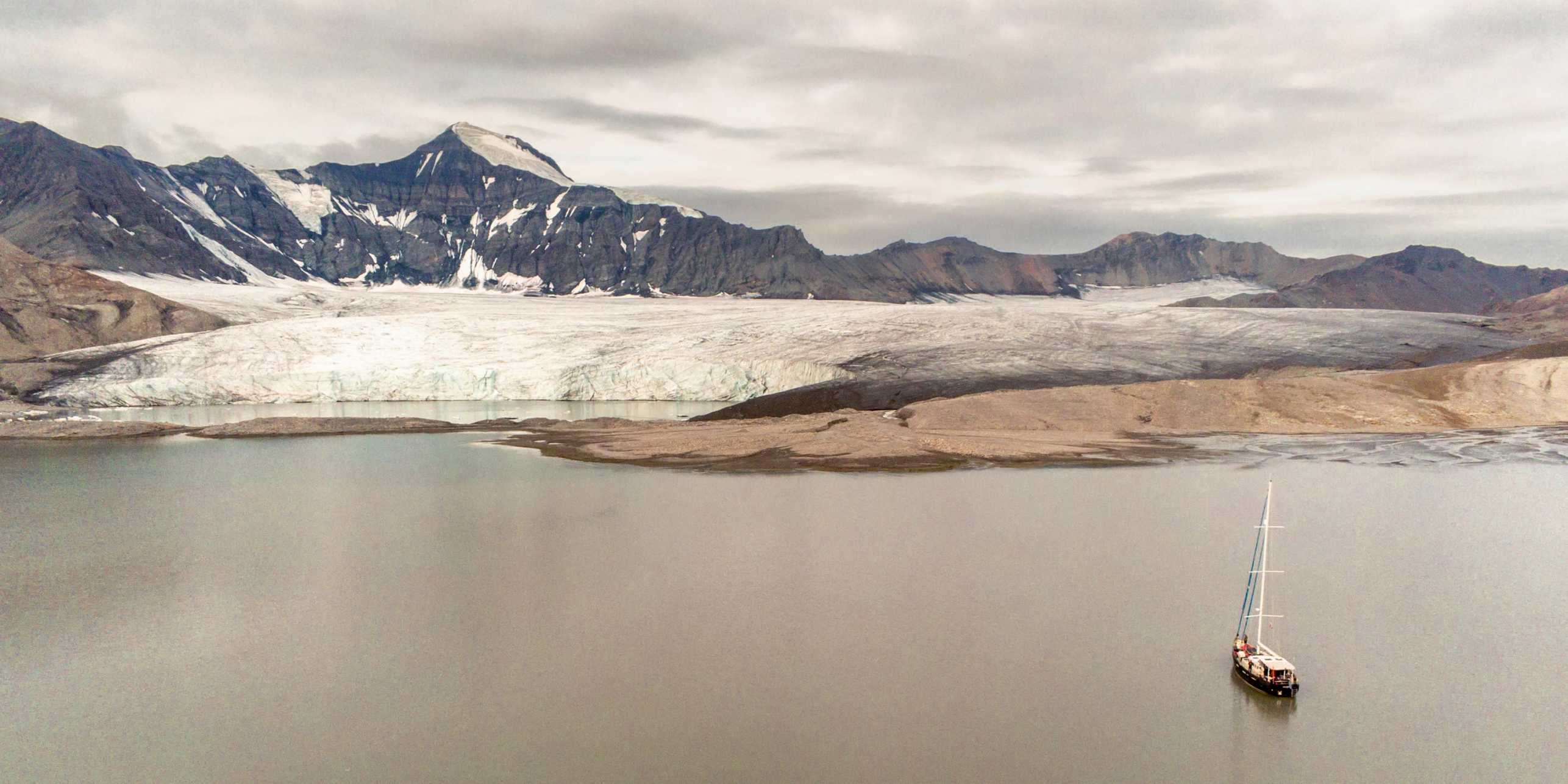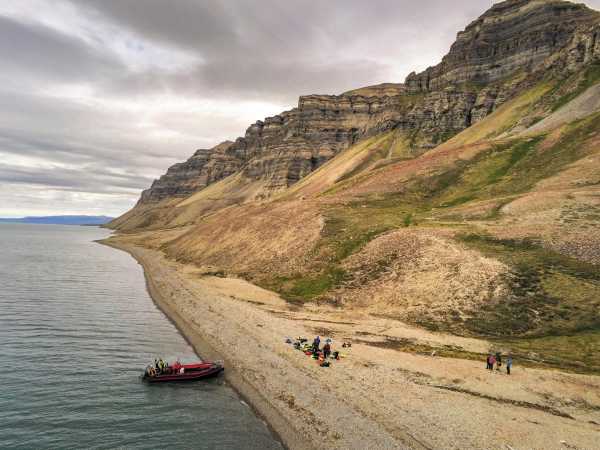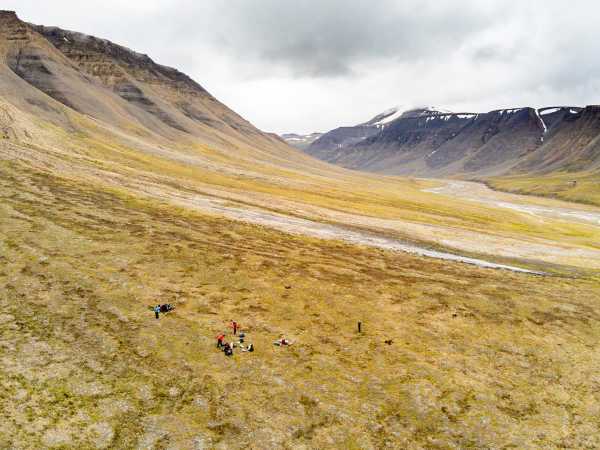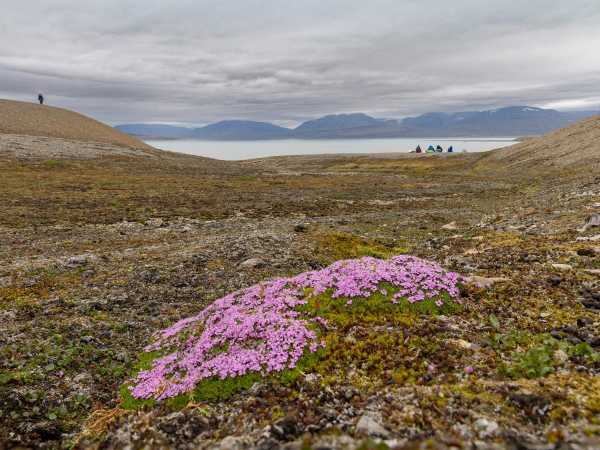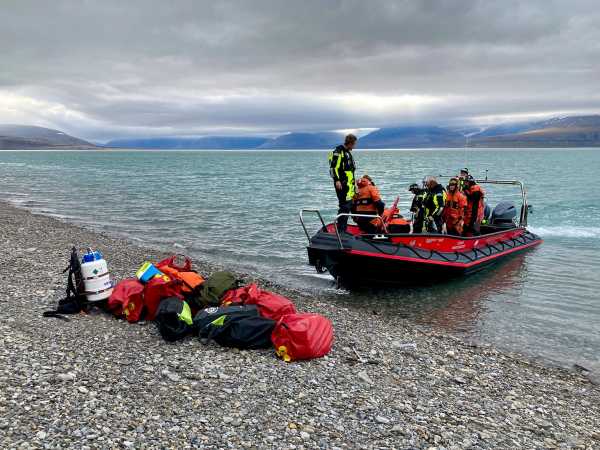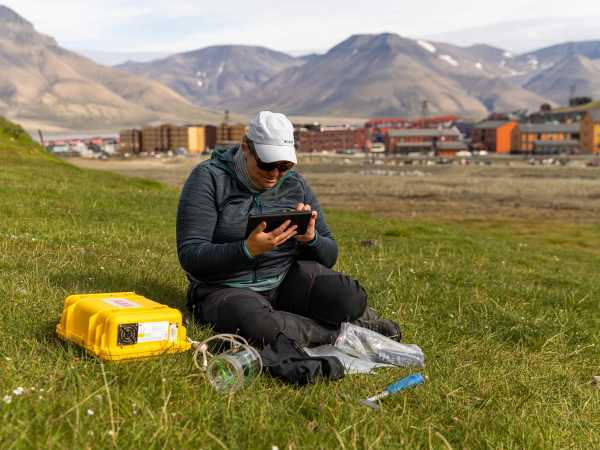
A research team from ETH Zurich and WSL travelled to Spitsbergen this summer to take a closer look at the phenomenon of Arctic greening. Project manager Sebastian Dötterl discusses research in the face of polar bears, strikes and war.
"We saw landscapes where the permafrost has collapsed over large areas," says Sebastian Dötterl, Professor of Soil Resources, with concern. He has just returned from a field campaign in Spitsbergen, an archipelago lying at about 78 degrees north latitude, where the thermometer climbs to an average of 9 degrees Celsius in summer.
He and 11 other researchers from ETH Zurich and the Swiss Federal Institute for Forest, Snow and Landscape Research (WSL) had travelled there in mid-July after lengthy, complex and nerve-racking preparations. The team's goal was to explore the background and mechanisms of the phenomenon known as Arctic greening - and Spitsbergen is an ideal field laboratory for this.
Biggest and toughest endeavour
Just a few days ago, Dötterl was kneeling in the tundra in wind- and rainproof clothing and a woolly hat to collect soil samples. Now, he sits in his darkened office in shorts and a T-shirt. He seems a bit worn out, but the change from the chilly Arctic to the August heat of Zurich isn't the only reason: the field research on Spitsbergen itself was gruelling - or rather the general conditions there were.
"In terms of scale and difficulty, this endeavour really put my previous fieldwork campaigns in the shade," Dötterl says. "I've never had to deal with such harsh conditions as I did on this project, and that's despite the fact that we also do a lot of field research in regions like the Congo."
'In terms of scale and difficulty, this endeavour really put my previous fieldwork campaigns in the shade.'Sebastian Dötterl
Coronavirus, war and a pilots' strike
First, the coronavirus pandemic delayed the start of the project by more than a year. Then Russia started its war against Ukraine in February, which meant that the Swiss research team wasn't allowed to use infrastructure operated by the Russian state on Spitsbergen as planned. Luckily, the team's Norwegian partners were able to charter a sailing ship and crew at short notice so that the researchers had a roof over their heads and could reach their study areas.
But that wasn't all: shortly before departure in July, a pilots' strike at the Scandinavian airline SAS threw the whole venture into jeopardy once more. "If my doctoral student Sigrid and her colleagues hadn't reacted so quickly and double-booked flights for all the members of the expedition, we would never have made it to Spitsbergen," Dötterl says.

Exploring rapid change in the Arctic
Longyearbyen, the capital of Spitsbergen, is the starting point for the research team of plant ecologists, soil scientists, geoecologists and microbiologists to investigate the local patterns and mechanisms of Arctic greening in the coming years as part of an ETH+ project. In addition to Dötterl's group, the project involves researchers led by Jake Alexander, Alex Widmer, Cara Magnabosco (all at ETH Zurich) and Aline Frossard at WSL.
The impetus for this research project came from the fact that global warming is rapidly changing ecosystems. And these changes are proceeding at an even faster pace in the Arctic than elsewhere in the world. Temperatures in the High North, for example, have seen a much greater rise than global average temperatures over the past three decades.

This is not only causing the ice masses to melt, but also changing soils and plants in the Arctic tundra. Between 1984 and 2012, 30 percent of the tundra in North America became greener, a external pageNASA study has shown. But why some areas of tundra green up more strongly and more quickly than others is probably related to local soil fertility and microclimate.
For one thing, the ETH and WSL researchers are focusing on native and introduced plants and how they are reacting to warming. The scientists are also studying how soil development is accelerating and biogeochemical cycles are changing. To this end, they are studying original tundra soils as well as disturbed soils near settlements and nutrient-rich soils in the catchment area of bird colonies.
Moreover, the researchers want to find out what role microbes will play in plants' colonisation of raw soils and in the changing microbial communities in better developed soils.
From their data, the researchers ultimately hope to derive a model that incorporates changes in vegetation, soils and microorganisms and can be used to predict future changes in Arctic ecosystems.
Improvisation was the order of the day
Despite all the travails the team faced, Dötterl is very satisfied with how the expedition he project-managed went. "On site, almost everything went as we had hoped," he says happily.
With the exception of one location - the authorities closed a settlement because of a stray polar bear - they were able to access all study areas as requested and collect samples: a total of 1.2 tonnes of soil material. Some of this the researchers shipped frozen to Zurich, where the material will be analysed in the laboratory next winter. In addition, they collected hundreds of plant samples and seed material as well as hundreds of microbiological samples.
Research on Spitsbergen
To preserve the genetic material these samples contained, they had to be immediately frozen in the field and transported in liquid nitrogen at −80 degrees Celsius. Given the lack of power supply for this in the wilderness, the researchers sent a tank containing 400 litres of liquid nitrogen at a pressure of 4 bar to Spitsbergen in advance. But the tank turned out to have a leak, so by the time it reached the island after three weeks in storage in Tromsø, there were barely 100 litres left in it. The pressure had sunk to 1 bar. "It was just about enough," Dötterl says.
Some of the research team's other technical kit also called for improvisational skills on occasion. A software error caused one of the three drones they had brought along to smash into a rock on its very first mission. However, the cameras it was carrying were still intact. So they would still be able to take pictures of the study areas from above, the researchers mounted the sensors on the tip of a metal pole that was 4 metres long. They may have had to carry the pole out in front of them like a flag, but at least they were still able to take aerial vegetation pictures.
Laboratory and trip to northern Norway planned
The intensive first field season will now be followed by a lot of laboratory work and another fieldwork mission next summer in northern Norway. There, the team will study soils and plants in the southern foothills of the Arctic tundra. This habitat is the warmer mainland equivalent of the high tundra of Spitsbergen.
After that, it will be time to analyse the extensive data, which will form the basis for modelling. Overall, the project is scheduled to run until 2025 - provided the finances are sufficient. "The many delays and changes to the programme have taken a pretty big bite out of our budget," Dötterl admits frankly.
The fact that this project went so well despite all the adversities was thanks to the three doctoral students involved: Sigrid Trier Kjaer, Lena Bakker and Jana Rüthers. "They're the ones who organised all the logistics so well, which saved the project. That was a huge achievement," Dötterl says happily.
All the other participants were highly motivated, too; they looked after each other and maintained a very good and collegial working relationship. "That's not something you can take for granted on a project as difficult as this one and under the sometimes cramped conditions on the ship," Dötterl says.
